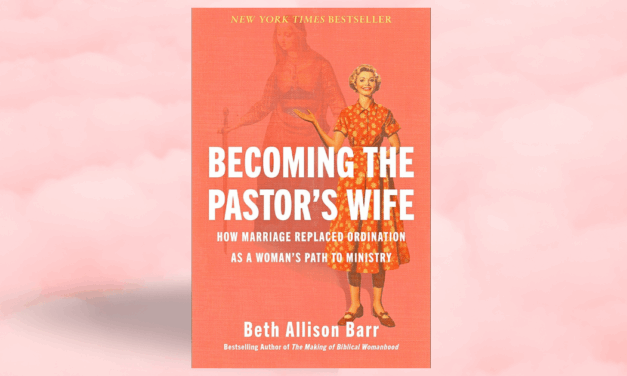This review first appeared in the Christian Research Journal, volume 31, number 2 (2008). For more information about the Christian Research Journal, click here.
Book reviews of
Infidel Manifesto: Why Sincere Believers Lose Faith
by Gary Lenaire
(Publish America, 2006)
and
The Dark Side: How Evangelical Teachings Corrupt Love and Truth
by Valerie Tarico
(Lulu.com, 2007)
Self-publishing is all the rage today. For a fraction of what once were prohibitive costs, an aspiring author can publish “on demand,” so that books are printed only on an as-needed basis, and can hire others to handle distribution and marketing. On-demand publishing has given the person who so desires a new way to opine. Among those who have taken advantage of this method of publishing are professed “ex-Christians” who wish to share their reasons for their loss of faith with the world.
Gary Lenaire, author of An Infidel Manifesto: Why Sincere Believers Lose Faith (Publish America, 2006), is a former Christian rock musician, and Valerie Tarico, author of The Dark Side: How Evangelical Teachings Corrupt Love and Truth (Lulu.com, 2007), is a family psychologist. Both profess to have once been Christians but have now abandoned their faith. A reader might suppose that persons of such different backgrounds would express themselves in completely different ways, and it is true that whereas Lenaire’s prose is often disjointed, Tarico’s has the ring of a competent writer. Beyond matters of expression, however, Lenaire and Tarico commit the same fundamental errors in their analyses of Christianity.
Shallow Roots. Lenaire and Tarico both write that they were raised in Christian homes, and each professes to have been active in ministry and to have attended Christian colleges. It is clear, however, that their life experiences provided inadequate nourishment to maintain a sound Christian faith. Lenaire says that belief in God was “never something I questioned; it was merely a belief I held” (p. 62). Later he reports that he “couldn’t get enough” (63) of the Christian life, attended church regularly, hosted Bible studies, and even attended a Bible college before serving as a military chaplain.
From this, one might get the impression of Lenaire as a mature, professing disciple of Christ. Other statements, however, reveal that his mindset was an uncritical one. For example, Lenaire claims that when it comes to Bible difficulties, “believers are taught” that “only the mature disciple can discover the answers” by using the “mind of Christ” (96). As Lenaire describes it, “the mind of Christ” is simply credulous bias, and faith and reason are at opposite poles in the Christian experience (127, 174). Lenaire says that as a Bible teacher, he “simply refused to even entertain the idea that inconsistencies exist in Scripture” (96). He recounts the story of a paper he wrote in college, in which he provided a convoluted explanation for the failure of the earliest ancient Israelites to conquer Jerusalem: the conquest did not happen, he argued, because only a king could actually conquer the city, and the failure of the Israelites “foreshadow[ed]…Christ’s victory as king and priest” (102). His professor awarded him an A-plus and praised Lenaire’s ability to be “receptive” to the Holy Spirit and to be an “intuitive apologist.”
Tarico’s story is similar. As a teenager she attended church often and eventually attended Wheaton College. She makes it plain, however, that her faith was never mature. She writes repeatedly of doubts that “terrified” her, and of struggles to understand the Bible’s meaning, and to reconcile biblical faith with the behavior of Christians around her. When she asked a youth minister for help to resolve these issues, his only advice was to “pray.” He had appealed to Matthew 17:20 (“If you have faith as a mustard seed, you shall say to this mountain, ‘move from here to there,’ and it shall move,” NASB) as an all-purpose resolution to problems, and Tarico quickly realized that this interpretation was not consistent with her life experiences. (Nor is it a correct interpretation of Matthew 17:20; none of Jesus’ contemporaries would have recognized such a statement as giving Christians free reign to have any request granted. The metaphor, rather, emphasized God’s commitment to bless the believer.) This experience became typical for Tarico as she composed a series of “tough questions” (24–25) to which she could find no satisfactory answers, such as, “How does blood atonement work?” and “Where did the Bible come from?”
The experiences described by Lenaire and Tarico were indeed unfortunate, but they indicate faith that was given an insufficient foundation. Solid answers to “Bible difficulties” of the sort Lenaire encountered, and to “tough questions” like Tarico’s, are widely available from Christian scholars and theologians. Many authors of homespun atheist apologetics, however, assume that there is no more advanced case to be made for Christianity than the ones they learned from the first.
Unqualified Sources. Lenaire and Tarico present themselves as having made informed judgments on Christian truth claims, which warranted their abandonment of faith. An inspection of their resource listings nevertheless indicates anything but a serious investigation. Lenaire’s only qualified source is Burton Mack—a biblical scholar who holds to fringe views on the development of Christianity, which understands Jesus in terms of a “cynic-sage.” Lenaire otherwise relies overwhelmingly on eighteenth-to-nineteenth–century freethinkers like Thomas Paine, or popular atheist authors like Dan Barker. He wrongly calls author Tim Callahan a “Bible scholar” (22), when Callahan has no credentials in biblical scholarship and is merely a popular writer for Skeptic magazine. Lenaire also does not use any qualified sources from the Christian side. The most serious Christian source he cites is a commentary by pastor and author Arthur W. Pink.
Tarico’s use of sources is only somewhat more credible than Lenaire’s. In making her case against Christianity, she does make use of some material by scholars, but the majority of sources she uses are popular works by unqualified writers (e.g., John Shelby Spong, who adheres to many fringe positions and is not a credentialed Bible scholar). Tarico is quite uncritical even with more qualified sources. She accepts, without question, the often erroneous work of Andrew Dickson White, The Warfare of Science with Theology, as well as Bart Ehrman’s tendentious Lost Scriptures. Tarico apparently believes that scholarship representing the case for Christianity began and ended with Gleason Archer’s Encyclopedia of Bible Difficulties, which she refers to only once, without answering any of the arguments it presents.
In light of this, it seems that Lenaire and Tarico are, for the most part, unaware of Christian apologetics literature that was written to respond to critics’ claims. Tarico, however, also clearly chooses to ignore what apologetics literature she is aware of, as indicated by her treatment of Archer. Perhaps a reason for this inclination is found in her retort to “apologists” who argue that understandings such as hers of the words of Jesus are incorrect. She states, “The Jesus of the gospels used simple sayings and stories to teach simple people. When the stories were parables, he interpreted them. To argue that the meaning of his promises is hidden, abstract, or available only to scholars and theologians is a denial of the ministry of Jesus as depicted in the gospels” (61). Tarico’s assessment is flawed on numerous counts.
First, parables by nature (as used not only by Jesus, but by other Jewish rabbis) were intended to be opaque, especially to persons not within a teacher’s circle of disciples. Second, the “simple people” Tarico has in mind lived in a different culture and spoke a different language. Their life and context is not “simple” to us as persons living in another culture and speaking another language. The matter is not one of being “simple” or not, but of lacking relevant contextual education. Third, Jesus called disciples, not merely listeners, and one of the many roles of a disciple is to grow in knowledge, not to remain “simple.” We may not need to become scholars or theologians, but the chief premise of being a disciple is to become more learned.
Lenaire, on the other hand, prefers to discount Christian apologetic responses to critics’ claims as indications of conspiracy. For example, he offers a standard charge of contradiction between 2 Kings 24:8 and 2 Chronicles 36:9 regarding the correct age of King Jehoiachin. The former says that Jehoiachin was 18 years old; the latter says he was 8 years old. Lenaire is aware of the commonly accepted solution, that there was a scribal error in the copying of 2 Chronicles that changed an 18 to an 8, but he dismisses this and other explanations of copyist error as contrived by scholars to hide the problem (109)!
Elsewhere he claims that, “Biblical commentaries are often theological distortions of reality using contemporary language to paint a picture that was not originally meant” (14). Finally, he rejects the authority of biblical scholars, for, he says, “ No one owns the rights to the Bible; I have just as much right to read, interpret, and comment on the Bible as the next person” (111).
Unpersuasive Arguments. With such uncritical use of sources, it is not surprising that both authors make a number of serious errors. Lenaire’s most absurd and oft-repeated error is his claim that the Council of Nicaea “published the New Testament Bible in 324 C.E.” (27). This is taken directly from Paine, and is incorrect. The Council of Nicaea was about the nature of Christ: whether he was an eternal being, as indicated by the New Testament, or a temporally created one, as was held by the heretical bishop Arius. The canon was not a subject of discussion at Nicaea. Lenaire also commits other errors, which are more puzzling. For example, he claims that the Gospel of Thomas, “though omitted from the Bible, was later included in the Qur’an alongside the noted virgin birth of Jesus” (89). The Gospel of Thomas was never even considered for inclusion in the Bible, much less included in the Qur’an! (Possibly, Lenaire is confused over an episode from a document called the Infancy Gospel of Thomas which is alluded to, not included, in the Qur’an.) Most peculiar of all, he says that the ideas of Martin Luther and John Calvin “thrived on the religious oppression and cruelty of the Dark Ages” (41). This would be an unusual feat, since the “Dark Ages” (now less prejudicially referred to as the “Early Middle Ages” by historians) were from roughly 420 to 1100 A.D., whereas Luther and Calvin lived between 1483–1546 and 1509–1564 A.D., respectively.
Tarico’s errors, while not as spectacular as Lenaire’s, are nevertheless quite serious. She does not claim that the Council of Nicaea created the canon, but she does claim incorrectly that the Council “established the doctrine of the trinity”(46), when in fact it merely affirmed what already was present in the New Testament and had been affirmed by the Christian church at large for centuries prior to the Council. She provides a small listing of typical claims of contradiction in the Bible, such as the allegation that the cherubim atop the Ark of the Covenant in Exodus 25:18 violated the command against graven images given in Exodus 20:4 (55). This is false, because a carved “image” was not merely any engraving or work of art, but one that was used to summon the presence of a deity, which was not the function of the decorative cherubim.
The bulk of Tarico’s errors are made as a result of her granting uncritical credence to her sources. For example, she cites an unpublished manuscript by a former evangelical minister, which claims that in Numbers 31:17-18, in order for Moses to distinguish between virgins and nonvirgins, he must have subjected each woman to a humiliating physical inspection (209). Neither Tarico nor her source seems to be aware that in ancient cultures, virgins were distinguished from others by certain types of clothes or cosmetics.
The uncritical use of sources by these writers reflects a recurring thematic weakness of homespun atheist apologetics. Writers of these works typically present themselves as having emerged from a state of ignorance as Christians, and having been enlightened by atheism, yet it is clear that these writers have not changed at all in this regard. Whereas they formerly willingly and gullibly accepted whatever they heard from other Christians, they now willingly and uncritically accept whatever they hear from skeptical sources. Neither their intellect nor their credulity has changed—only their allegiance has.
Rhetorical Appeals. Authors of homespun atheist apologetics typically rely heavily on rhetoric to capture their readers’ imagination, and to portray Christian belief as a burden from which they happily have been relieved. They often confidently believe that in their new state of enlightenment, they are uniquely qualified to enlighten Christians. Lenaire calls his book an “eye opener” (14) and scatters praise for the virtues of his newfound worldview throughout his commentary, such as: “The stagnant thinker never desires to expand, progress, or elaborate; the freethinker never ceases to” (17). The implication to be drawn is clear: to be a Christian means to be a stagnant thinker, unwilling to mature and grow. In contrast, Lenaire claims that he has “experience[d] real liberation from the chains placed on the mind by religious and political oppressors” (19).
Tarico’s language is no less condemning, and no less reliant upon a broad brush of rhetorical characterizations overlaid with a sense of rational superiority. Her message is said to be for those who “care deeply about honoring truth and goodness in our personal lives and for our society” against the “growing power of Evangelicalism to distort both” (38). In her view, many apologists who defend the Bible “become contortionists or even sophists” (50). Tarico further says, “constantly remodeling our foundational assumptions is simply too costly from the standpoint of emotional energy and life disruption” (42). The apparent message behind this is that those who remain in Christianity do so because it is too disruptive to face up to the facts (as Tarico claims she has), and because they do not care about “truth and goodness.”
Authors of this sort also tend to place an emphasis on their personal credibility and objectivity. Lenaire chose to include the word “sincere” in his book’s title as a self-description, and repeatedly emphasizes his personal sincerity and honesty. He says that he has not “set out to distort the facts” and that he writes “without the bias of dogma” (15). Tarico makes the same dichotomy, juxtaposing “honest inquiry” with “a set of handed-down answers” (27), with the obvious implication that the former is a characteristic of her newfound atheism, but not of Christianity.
It is regrettable that Lenaire and Tarico are representative of a growing breed of “fundamentalist atheist” that is taking advantage of self-publishing technologies to advertise their discontent. Their professed “de-conversions,” however we may interpret them theologically, reveal a desperate need within the body of Christ for sound teaching (see 2 Tim. 4:3). If we do not heed the emergence of these writers as a warning to put our house in order, we will prove true the prediction of some commentators that within fifty years, Christianity in America will be in the same state as it is in Europe now. “When the son of man comes, will he find faith” (Luke 18:8 NASB) in America?
— James Patrick Holding








